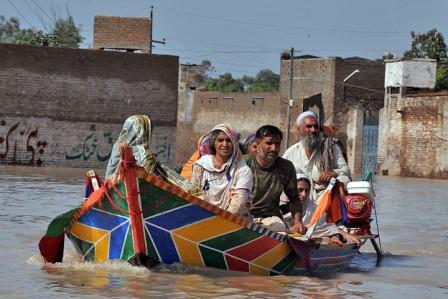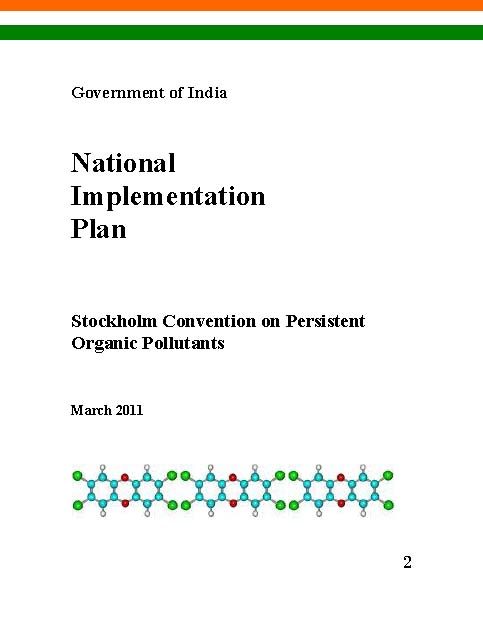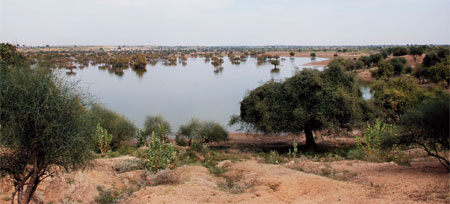/topics/climate-and-weather
Climate and Weather
Guidance manual for drinking water quality monitoring and assessment - A document by NEERI and NICD
Posted on 20 Apr, 2011 03:09 AMIn order to safeguard the health of the people, drinking water must meet quality standards. The main issues involved in drinking water safety are water quality management, surveillance and control mechanisms.
Levels of contaminants need to be ascertained through standard procedures. Each agency involved in water supply in India, has its own laboratory test practices and this manual details methods for all parameters adoptable by all laboratories.
Youth forum on climate actions and mountain issues - The International Centre for Integrated Mountain Development (ICIMOD), 8th – 12th August, 2011, Kathmandu, Nepal
Posted on 19 Apr, 2011 11:09 AMOrganizer: The International Centre for Integrated Mountain Development (ICIMOD)
Venue: ICIMOD headquarters, Kathmandu, Nepal
Description:
The overall objective of the Youth Forum is to celebrate International Year of Youth 2011/12 and International Youth Day, 12 August, through continuation of series of activities started in 2008 to build the next generation leadership in sustainable mountain development and climate change adaptation in ICIMOD Regional Member Countries (RMCs) and beyond, especially in the context of upcoming UNFCCC CoP 17 and Rio+20 meeting.
Heavy rains and dry lands don t mix: Reflections on the 2010 Pakistan flood - Article from NASA Earth Observatory
Posted on 16 Apr, 2011 03:42 PM Flooding forced millions of Pakistanis to flee their homes in July and August 2010.
Flooding forced millions of Pakistanis to flee their homes in July and August 2010.
The summer of 2010 was different. In July and August, rain fell over most of Pakistan and persisted in some places for weeks.
Lingering floods in Pakistan - Updates from Earth Observatory
Posted on 15 Apr, 2011 09:49 AM
A combination of factors, including La Niña and a strange jet stream pattern, caused devastating floods. The Indus River rapidly rose, and a dam failure in Sindh Province sent part of the river down an alternate channel. The resulting floodwater lake lingered for months, leaving crops, roads, airports, even entire communities underwater.
Distributional implications of climate change in India – A policy research working paper by World Bank
Posted on 14 Apr, 2011 03:49 PMThis working paper by World Bank analyzes how changes in the prices of land, labor, and food induced by modest temperature increases over the next three decades will affect household-level welfare in India.
Stockholm Convention on Persistent Organic Pollutants – Draft National Implementation Plan by the Ministry of Environment and Forests (2011)
Posted on 14 Apr, 2011 07:35 AM As per Article 7 of the Stockholm Convention, countries are required to develop the National Implementation Plan (NIP) of the Stockholm Convention on Persistent Organic Pollutants (POPs) to demonstrate how the obligations under the Convention would be implemented. The Convention was adopted with the objective of protecting human health and the environment from POPs and came into force from April 2006 in India.
As per Article 7 of the Stockholm Convention, countries are required to develop the National Implementation Plan (NIP) of the Stockholm Convention on Persistent Organic Pollutants (POPs) to demonstrate how the obligations under the Convention would be implemented. The Convention was adopted with the objective of protecting human health and the environment from POPs and came into force from April 2006 in India.
The Ministry of Environment and Forests, which is the nodal ministry for the Global Environmental Facility (GEF) and Stockholm Convention in India has prepared a NIP and has committed itself to its implementation subject to adequate assistance. It has had to harmonize the interests and stand points of different sectors involved and thereafter determine the position of the Indian government.
India understands that compliance with the obligations on Parties set out in the Convention will have a significant and positive influence not only on India‘s own chemicals management regime but also on the ultimate global success of the Convention. Since among the POPs only Dichloro Diphenyl Trichloroethane (DDT) and Polychlorinated Biphenyls (PCBs) are used in the country the inventory concentrated on DDT storages and facilities where PCB-containing electrical equipment was found.
Near normal summer expected this year - Statement by Dr Ajit Tyagi, IMD - PIB release
Posted on 12 Apr, 2011 06:42 PMTemperature may go beyond 45 degrees in certain pockets, but number of such days will be very less. Certain pockets in northern India will have 1 to 2 degree high temperature than normal at times and eastern India will remain cooler. The peninsular region and central India will be near normal.
Union Cabinet approves comprehensive mission document of the National Water Mission under National Action Plan on Climate Change - PIB release
Posted on 12 Apr, 2011 01:12 PMArticle courtesy: Press Information Bureau
The Union Cabinet has approved the Comprehensive Mission Document of the National Water Mission.
The National Water Mission is one of the 8 National Missions which form the core of the National Action Plan for Climate Change. The Mission Document for National Water Mission was drafted by the Ministry of Water Resources through consultative process with full involvement of State Governments, concerned Central Ministries, Non-Governmental Organizations, academicians and other stakeholders.
Water turns the tide - A barren district of Rajasthan is seeing development, thanks to rains last year and floods in 2006
Posted on 12 Apr, 2011 11:31 AMArticle and Image Courtesy: Down To Earth
Author:
A barren district of Rajasthan is seeing development, thanks to rains last year and flood in 2006.
 Administration has revived a man-made pond in Nagarda village that was drying up.
Administration has revived a man-made pond in Nagarda village that was drying up.
Photo: Sayantoni Palchoudhuri
Deep wells and prudence - Towards pragmatic action for addressing groundwater overexploitation in India - A World Bank document (2010)
Posted on 12 Apr, 2011 01:51 AM India is the largest user of groundwater resources in the world. It is estimated that approximately 230 cubic kilometers per year is used annually, this is more than a quarter of the total world consumption from this resource.
India is the largest user of groundwater resources in the world. It is estimated that approximately 230 cubic kilometers per year is used annually, this is more than a quarter of the total world consumption from this resource.
It is in this context that this World Bank report looks at the reasons for this quantum of groundwater usage.
The report delves into socio-economic and political reasons and looks at policies which inadvertently promote so much extraction. The report also analyses various attempts to manage this resource. These attempts range from government and international agency efforts directed to grassroots mobilisations. Finally the report comes out with suggestions to deal with this crisis.





